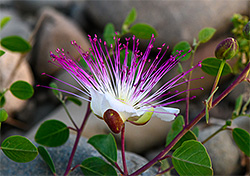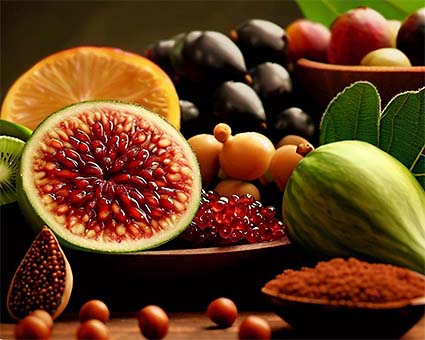3 Best Rutin Supplements

- Contains 500 mg rutin per tablet
- The dark glass packaging offers the most optimal protection against the effects of oxygen, moisture and light

- Complete formula for the eyes
- With carotenoids, flavonoids, rutin, minerals, taurine and L-cysteine

- Formula for the immune system
- With vitamin C, quercetin and rutin
Buy Solgar's loose rutin here in a dosage of 500 mg. Two formula products, from Bonusan and AOV, also contain rutin.Below you can read more about the flavonol rutin.
Rutin/Rutoside/Sophorin

Rutin is a flavonoid, a subgroup of the flavonoids. Flavonols are the most abundant flavonoids. Flavonoids are an essential food ingredient. Other names for Rutin are rutoside, sophorin or quercetin-3-rutinoside.
Rutin is a bitter, yellow to yellow-green substance and is found in many plants, nuts and fruits. In particular, citrus fruits (oranges, grapefruits, lemons and limes) and mainly in the white pulpy mass between fruit and peel.
Rutin is almost always found in nature in the presence of vitamin C and was originally called vitamin P partly for this reason. The name Rutin comes from the plant Ruta Graveolens (Wineweed). While rue contains many flavanoid glycosides, it contains relatively little rutin.
Chemical specifications
Flavonols occur in food as glycosides; chemicals composed of a sugar (the glycone) and a non-sugar (the aglycone). Glycosides often have important physiological or pharmacological effects and are counted among the bioactive compounds.
Rutin is a glucoside of the flavonolic aglycon Quercetin commonly found in crops, with a disaccharide Rutinose. The scientific name is therefore quercetin-3-rutinoside. In our digestive system, Rutin is metabolized to its aglycon quercetin.
Flavonoids and our health
In recent years, many studies have overwhelmingly shown the indispensability of flavonoids for the proper functioning of our bodies. More than 6,000 different flavonoids have now been identified.
Rutin is even more effective when combined with Vitamin C, these have a synergistic effect. Rutin also helps the body make its own Collagen.
Sources of Rutin
Rutin is stored in the vacuole of the plant cell and is water-soluble.
The flower buds of the caper plant contain by far the most rutin (332.2 mg per 100 grams). Other good dietary sources of rutin are: - black olives (45.3 mg)
- whole grain buckwheat (36.1 mg)
- rhubarb (32 mg)
- Carpobrotus (icewort) (24 mg)
- asparagus (23.2 mg)
- cherry tomatoes (3.3 mg)
- marjoram (2.6 mg)
- fresh plums (2.5 mg)
- fenugreek (1.9 mg)
- zucchini (1.3 mg)
- white onion (0.6)
- almond (0.3 mg)
- red onion (0.2 mg)
- tomato (0.1 mg)
- apricots (0.1 mg)

For medicinal use of Rutin, the main sources are buckwheat, the Japanese pagoda tree (Honey tree / Sophora japonica) and eucalyptus. Also, black and green tea leaves, linden and passion flowers, elderberry , hawthorn, St. John's wort, Ginkgo Biloba, figs, apples and berries contain Rutin as one of the active ingredients.
